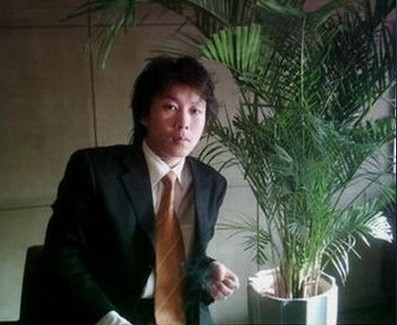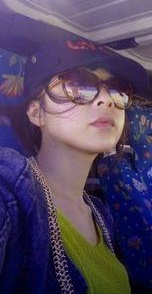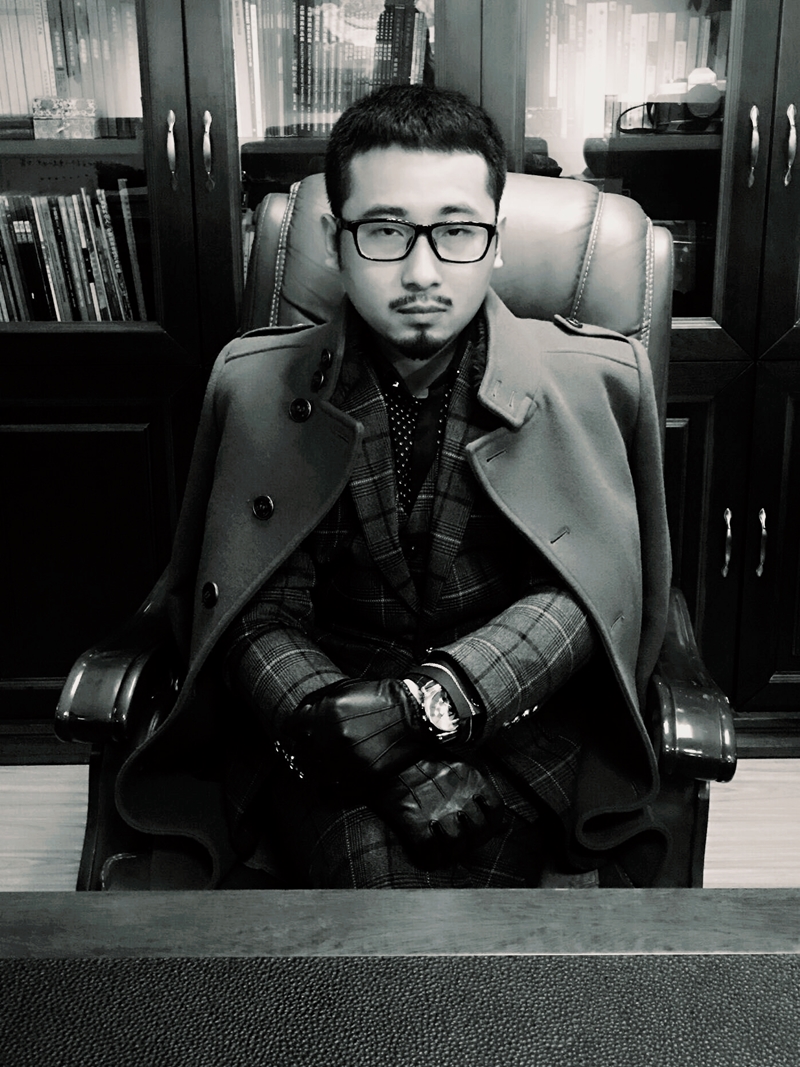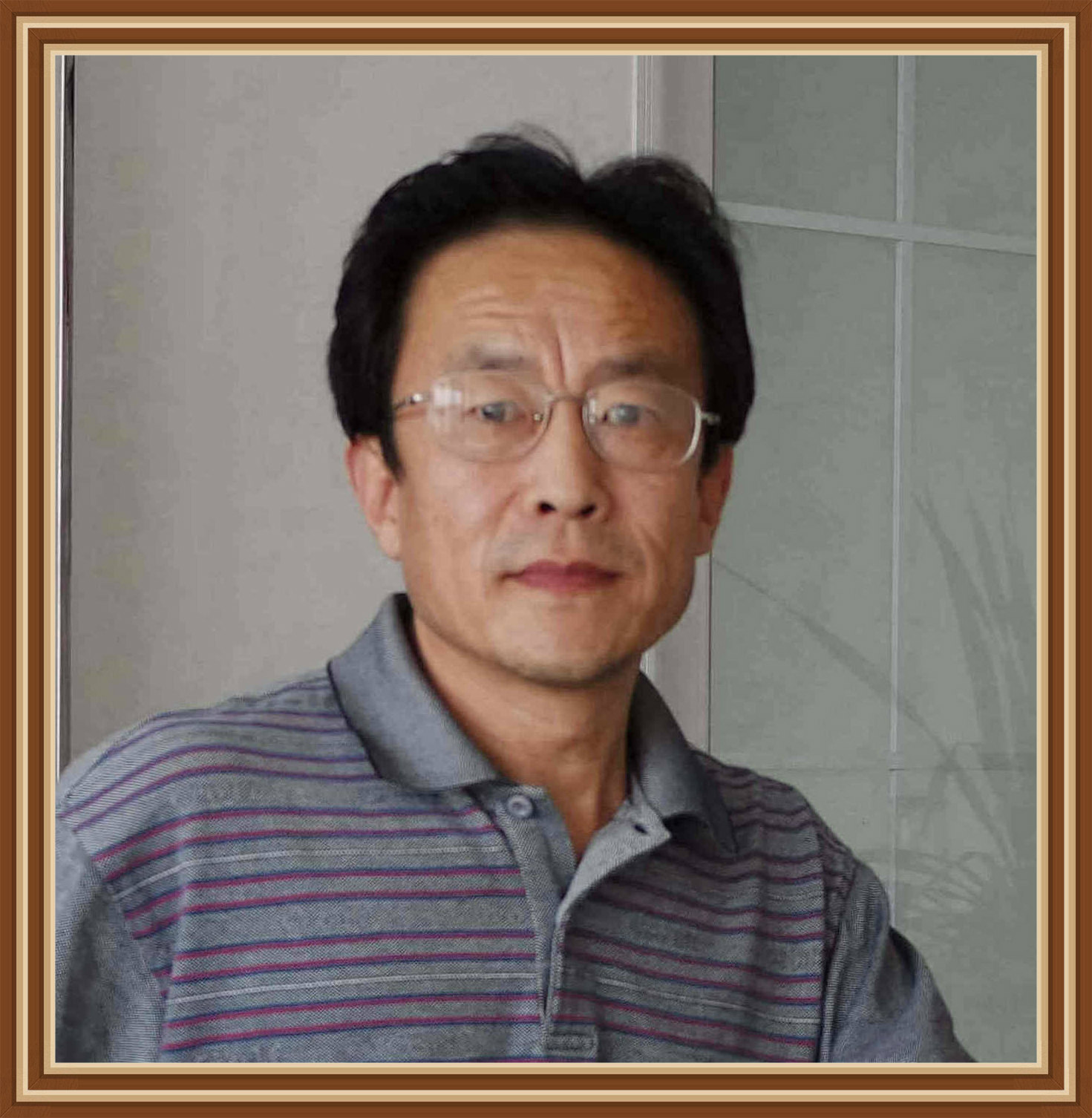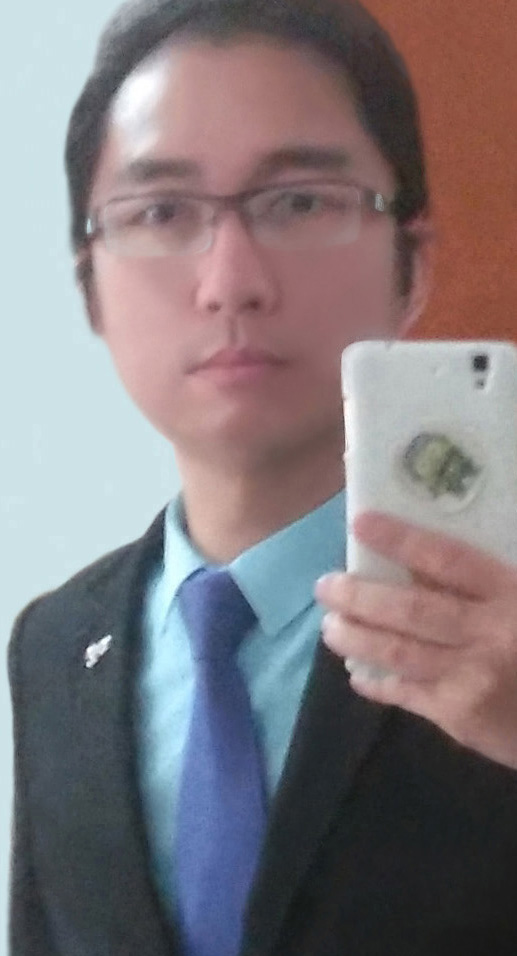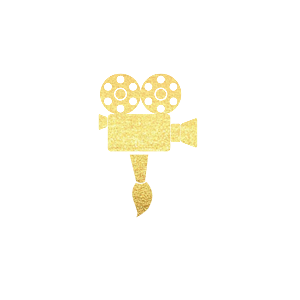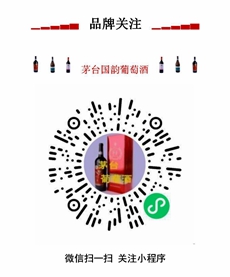展览时间:2021年9月18日-2021年10月24日
展览机构:狮語画廊(上海)
展览地址:上海徐汇区武康路376号武康庭内
开幕时间:2021年9月18日
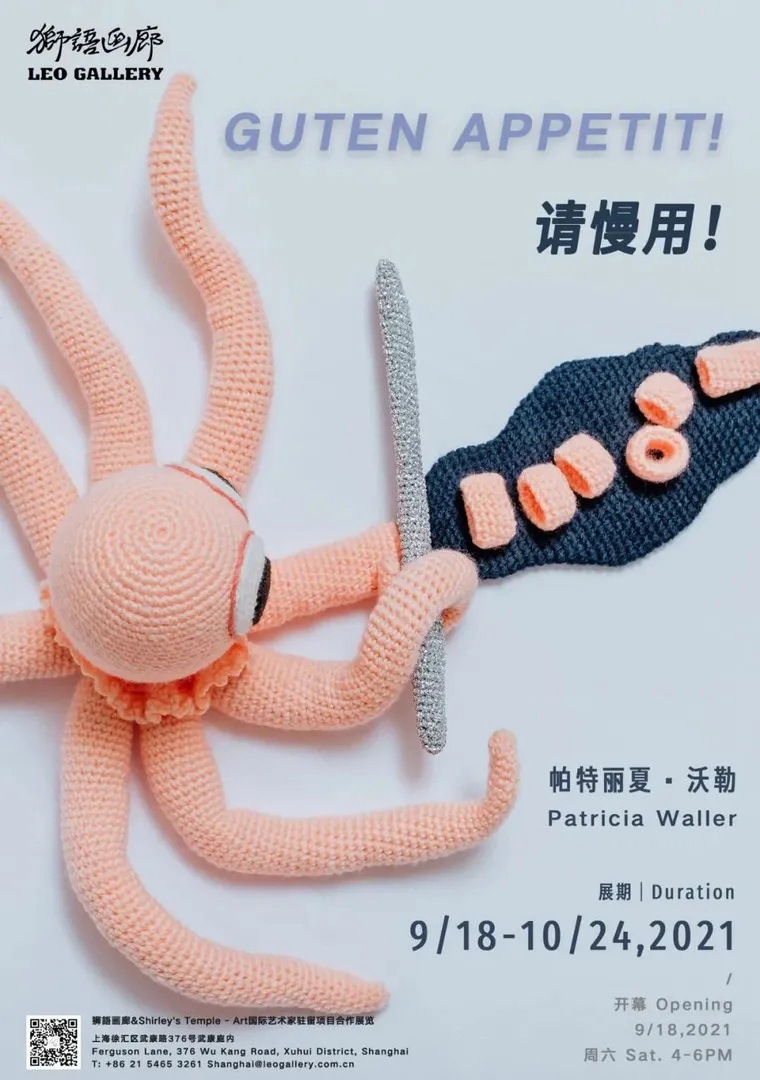
画展海报
展览介绍:
带着德意志民族与生俱来的善于反思的特性,帕特丽夏·沃勒被视为欧洲艺术史上第一位利用手工钩织演绎现代先锋冷幽默的艺术家。在她看似柔和无邪的钩针作品表象之下,伫立的是令人惊讶的丰富隐喻。“不恰当性”成为了沃勒作品的代表标签,形式与内容的错置、媚俗与高雅的对位、天真与狂暴的对撞。鲜明的层次反差让沃勒的作品好似成为了怪诞但迷人的一曲复调。
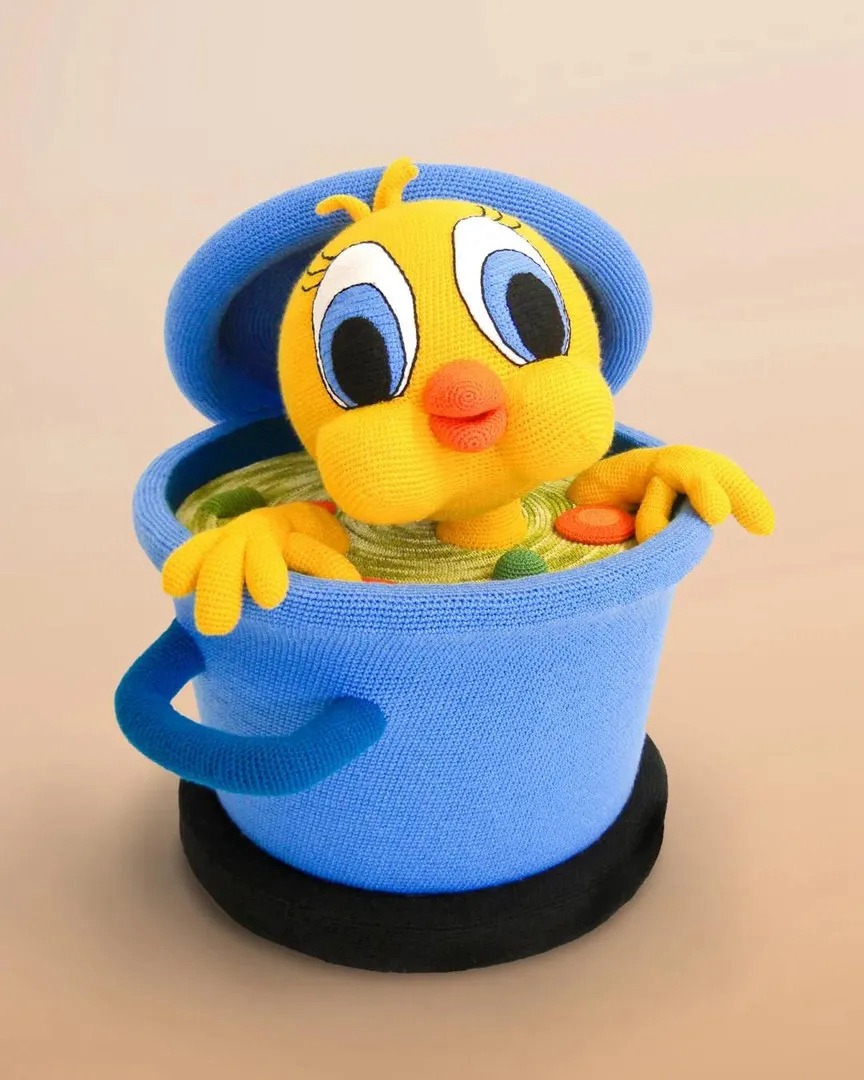
《崔弟》帕特丽夏·沃勒 71cm×71cm×84cm 2008年作 纱线 木材 合成材料 钩针编织
作为一名最初的雕塑家,帕特里夏·沃勒对针与线的运用始于其在卡尔斯鲁厄国家美术学院学习期间。当时,帕特丽夏意在寻找在艺术世界中尚未被广泛使用的媒材,也有意摆脱机械制造下的工业束缚。羊毛、棉花、织布,这些在传统性别认知中被定位为“居家”、“典型女性”的媒材,与大众视野中“不合时宜”的针织工艺,被视作与高级艺术毫无关联。如同艺术家本人所言,“这种可以称之为真正女性化的材料和方法,反映出我们在艺术、文化和社会中的地位。”这也成为沃勒作品的第一重对撞,以对刻板印象中所谓“落伍”的形式运用,挑战传统惯例,并拓宽严肃议题的探讨边界。
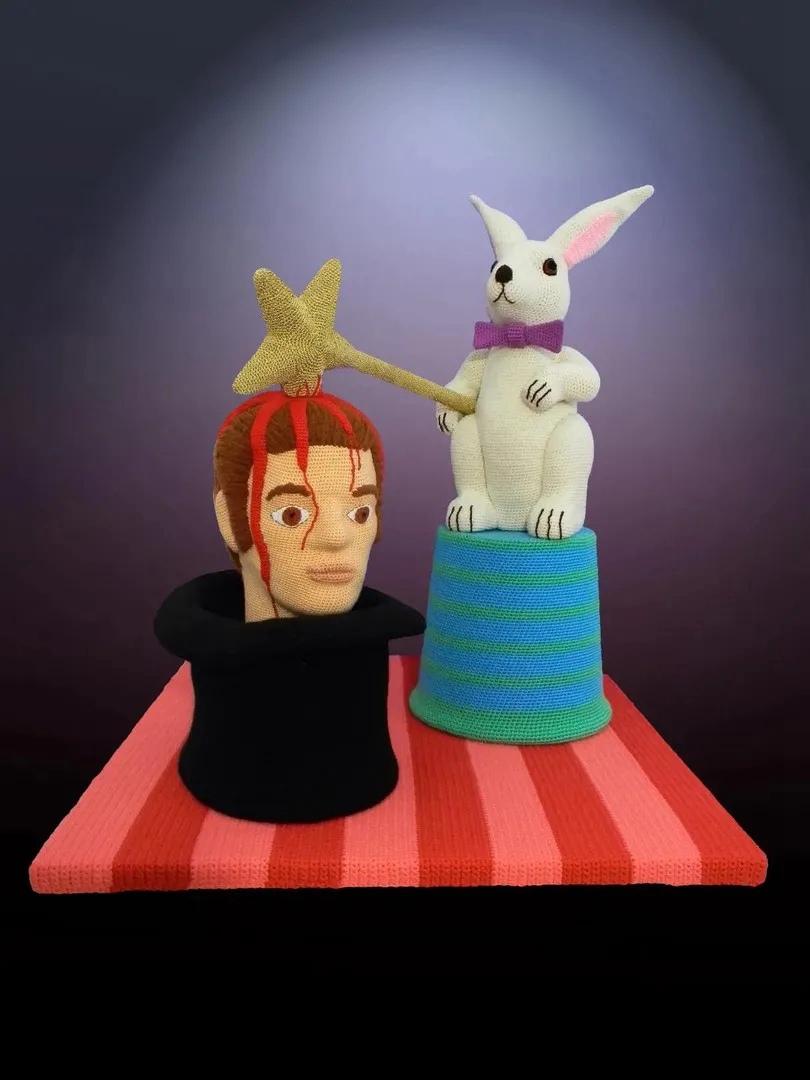
《霍克斯波克斯》帕特丽夏·沃勒 70cm×70cm×75cm 2014年作 羊毛 塑料 木材 钩针编织
沃勒作品的先锋之处,并不仅限于媒材的离经叛道,而关乎内容与形式间的古怪奇妙的反差。从艺术史上经典作品的再创造开始(约瑟夫·博伊斯和杰夫·昆斯的兔子),沃勒的创作常涉及天真的孩童、可爱的动物,或著名的电视卡通人物,但其明亮的卡通风格下常常带有惊人的暴力因子。残酷的伤害与肆无忌惮的屠杀似乎成为了好莱坞机器与游戏行业标配的视觉产物。它们改变了人们对于暴力与死亡的现实认知,创造了对于残暴的美化性描述的审美屈从。残肢断臂的孩童、被餐具压扁的动物、魔术台上的“意外”……取材于流行文化的血腥的元素在沃勒“充满童趣”的作品创造了荒诞、反常的喜剧效果。而在沃勒最具代表性的系列作品“食用艺术”中,艺术家挑战了传统上观众接触艺术的感官渠道,钩针细心编织的餐食成为了艺术的饕餮盛宴--观者是在用视觉而非味觉来享受沃勒以古灵精怪的点子烹调出的作品。
虽然艺术家以绝妙的技法狡黠地构建了“无邪”的门面,沃勒的作品却是真实梦魇的再现--它们从未是温和纯真的。倘若仔细观察,她的作品处处充斥着强烈的讽刺与批判,几乎即刻调动起观者下意识中的震惊与不安。在沃勒处理作品的方法中,我们可以窥见当下社会是如何面对不同形式的暴力、容忍不断渐长的暴行的。羊毛这一本该为人类提供庇护与温暖的材质,现成为了诱捕、欺骗对象的外衣。以看似平淡无奇的日常物品作为启发,沃勒通过钩编织物创造了新的形象,以去常规性的、不同的呈现手段,质疑了人类观察的视角。她关注人类处置恐惧的方式,及压抑自身情感的能力,玩弄人们日常更情愿忽视的议题:对感官不加掩饰的渴望、非理性的惶惑与危险的欲求。在这个层面上而言,沃勒的钩针更像一把利斧,劈开一片动荡的现代社会中“介于黑与白之间的灰色地带”,企图呈现当代最真实的存在体验。"通过一种充满挑衅的戏谑手段,我将荒谬与怪诞融为一体,也将对日常生活的悉心洞察与对人性的永恒好奇相结合。"她带着微妙的怀疑态度与诙谐自嘲直面当下,揭示出日常被人类所忽视的隐匿创痛。
正是沃勒作品中对当前时代心理的精准侧写,让其“不恰当性”变得恰如其分。她游走在媚俗与高级艺术的间隙,以诙谐的姿态轻松搭建起一座极富智性挑战的文化迷宫。在线与线的勾缠间,每个不和谐的音符都最终找到了自己的归属。
With her native Germanic reflective nature, Patricia Waller is regarded as the first artist in the history of European art to use crochet work to express the dark humor of the modern avant- garde. Beneath the seemingly innocuous surface of her crocheted works lurks a surprising richness of metaphor. From the disjunction of form and content, the counterpoint between kitsch and elegance, to the collision between innocence and violence, "inappropriateness" could be considered a fitting label for Waller's works. The contrasting layers in Waller's works give voice to a grotesque but fascinating polyphony.
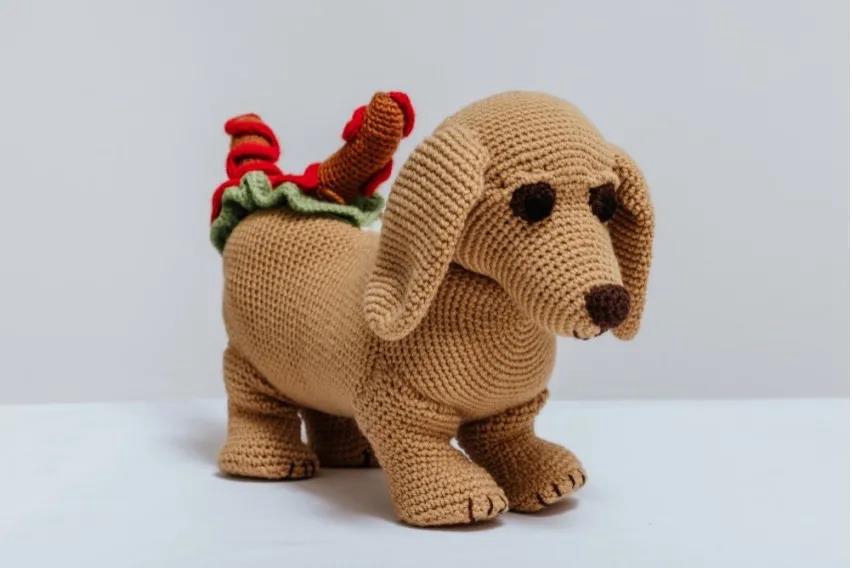
《热狗》帕特丽夏·沃勒 L 40cm 2012年作 纱线 棉布 羊毛织物 钩针编织
Originally trained as a sculptor, Patricia Waller's adoption of needle and thread began during her studies at The State Academy of Fine Arts Karlsruhe. At the time, Waller was looking for materials not yet established in the arts, and wanted to become independent from the restrains of the industrial world and its machines. Wool, cotton and yarn, materials traditionally considered 'domestic' and 'typically feminine' in terms of gender perception, as was the 'anachronistic' craft of knitting, were seen as having no connection to high art. As the artist herself stated, "we women artists who work with it do so to reflect our status in art, culture, and society, using a material and method that one can call genuinely feminine." This becomes the first layer of contention in Waller's works, using forms disregarded by the mainstream view in order to challenge conventions and expand discursive boundaries.
The edginess of Waller's works does not only originate from the subversive nature of the medium, but also from the eccentric yet fantastic contrast between content and form. Starting with the recreation of well-known works of art history, such as Joseph Beuys’ and Jeff Koons' rabbits, Waller's works often involve innocent children, cute animals or famous television characters. However, the bright-colored, cartoon-like style often reveals a surprising undercurrent of violence. Cruel injuries and uninhibited slaughter have become a common element of the visual productions of the Hollywood machinery and of the games industry. They have changed and molded our perception of the reality of violence and death, and have shaped an environment in which people succumb to the fascination of an aestheticized depiction of violence in the media. Mutilated children, animals crushed by cutlery, 'accidents' happening during magic stage shows ... the gory elements rooted in popular culture added to Waller's 'childlike' subjects produces a sense of comedic absurdity. In Waller's most iconic series "Eat Art", the artist upturns the traditional sensory channels through which the audience can access art. The carefully crocheted meal becomes a feast of art, visually - the viewer enjoys Waller's whimsical creations with sight rather than taste.
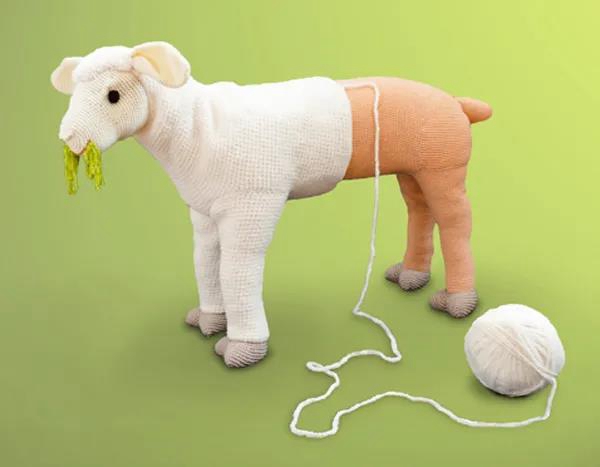
《羊》帕特丽夏·沃勒 76cm×25cm×56cm 2007年作 纱线 棉布 金属丝 钩针编织
Although the artist has cunningly and with great skill constructed a facade of 'innocence', Waller's works are the recreation of real nightmares - they have never been innocent. If examined closely, these works are suffused with wry irony and acerbic criticism, almost immediately provoking shock and unease in the viewer, even if just subliminally. In the way Waller handles her works, we can see how society deals with the various forms of violence and the growing acceptance of brutality. Wool is supposed to be a familiar, useful material that provides protection and warmth, but here it is used as a means of ensnaring or beguiling its objects. With seemingly banal and every-day objects, Waller creates new images through the crocheted skin. Through defamiliarization and a different form of presentation, she questions people’s ways of seeing. She focuses on how we deal with our fears and on our ability to repress them, and plays with the barely veiled craving for sensation, with irrational phobias and dangerous desires. In that sense, Waller's needle is more like a sharp axe, opening up a "grey zone between the world of black or white" in the chaotic modern society, in an attempt to present the most authentic experience of contemporary human existence. Inspired by everyday life, Waller’s works are replete with the artist's accurate observations of people’s inner worlds, and serve as bitter parodies of our seemingly perfect lives - animated characters one after another fall into the abyss of calamity; the most innocent children and animals are turned into the perpetrators as well as victims of war and violence. Referring to her artistic vision, Waller states: "Through a provocative playfulness, I combine absurdity and oddity with a careful insight into everyday life and an eternal curiosity about human nature." She confronts the present with subtle skepticism and witty self-mockery, revealing hidden traumas in our everyday lives that are habitually overlooked.
It is the precise portraying of the mental state of our times in Waller's works that makes their 'inappropriateness' appropriate. She wanders between the worlds of the mundane crafts and high art, effortlessly building an intellectual .

